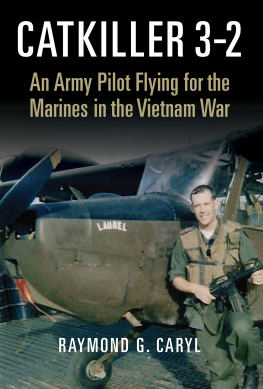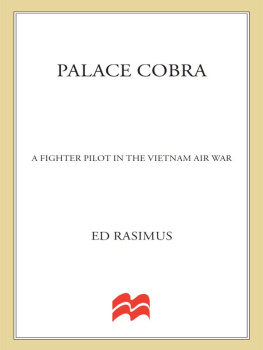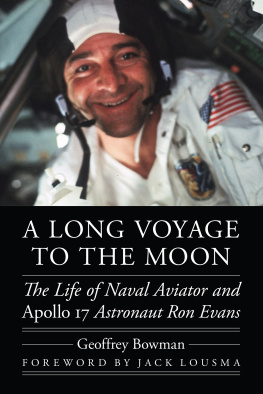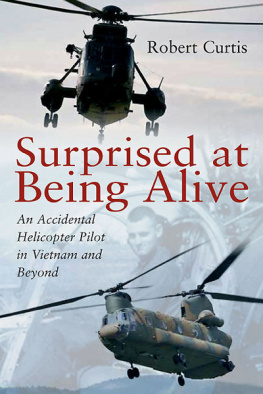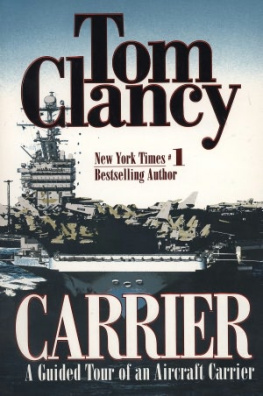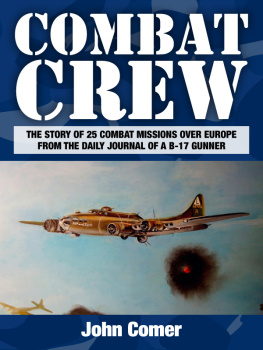FLYING WARRIOR
My Life as a Naval Aviator During the Vietnam War
2017 JULES HARPER
All rights reserved. No portion of this book may be reproduced, stored in a retrieval system, or transmitted in any form or by any meanselectronic, mechanical, photocopy, recording, scanning, or other,except for brief quotations in critical reviews or articles, without the prior written permission of the publisher.
Published in New York, New York, by Morgan James Publishing. Morgan James and The Entrepreneurial Publisher are trademarks of Morgan James, LLC. www.MorganJamesPublishing.com
The Morgan James Speakers Group can bring authors to your live event. For more information or to book an event visit The Morgan James Speakers Group at www.TheMorganJamesSpeakersGroup.com.
Use of released US Navy imagery does not constitute product or organizational endorsement of any kind by the US Navy.
| ISBN 978-1-68350-066-7 paperback ISBN 978-1-68350-067-4 eBook ISBN 978-1-68350-068-1 hard cover Library of Congress Control Number: 2016907123 Cover Design by: Rachel Lopez www.r2cdesign.com Interior Design by: Bonnie Bushman The Whole Caboodle Graphic Design |
In an effort to support local communities, raise awareness and funds, Morgan James Publishing donates a percentage of all book sales for the life of each book to Habitat for Humanity Peninsula and Greater Williamsburg.
Get involved today! Visit
www.MorganJamesBuilds.com
ACKNOWLEDGMENTS
I would like to sincerely thank the following people who have assisted me with this manuscript.
A special thanks goes to my family. My wife, Sandy, there from the beginning of my flying journey, was a great help with my spelling, grammar, and editing. Also, my daughter Michelle Allen spent many hours, not only editing but also helping with the technology required to create this manuscript.
I also want to express gratitude to my friends. Mike Hall provided editorial assistance throughout the writing phase and offered inspiring and constructive remarks concerning my writing techniques. Jim Pedersen helped to edit the updated version of the DVD, Bringing the War to the Enemy.
I would also like to thank the US Navy for releasing some of the photographs that are displayed in this book.
Preface
BRINGING THE WAR TO THE ENEMY
Naval aviation played a large role in the Vietnam War that began on August 7, 1964, when the Tonkin Gulf Resolution was passed by Congress. It ended when the last ten marines from our embassy departed Saigon on April 30, 1975. Because of my age and service to the navy, I was involved in this war for two cruises on-board the USS Kitty Hawk as a naval aviator, and my participation was the defining event of my life. I signed and honored a contract with our government to defend our country at all costs.
It has taken me a long time since the war to sit down and record what occurred during this relatively short period of time. After moving into an age fifty-five and over community, I started a Valencia Reserve Veterans Club and was president for several years. Our club collected donations to erect a flagpole and dedication monument for our community. Each year we have a Veterans Day party, and all the donations go to the Wounded Warriors of South Florida. They, in turn, pass it on to returning veterans who need temporary assistance adjusting to civilian life.
Shortly after beginning the club, I gave my first presentation on what I experienced in Vietnam, entitled Bringing the War to the Enemy. This talk also included a sixteen-minute home movie I had filmed while flying missions over Vietnam using a super 8 movie camera. It was so successful that I branched out to give the presentation in other forums, such as local clubs and businesses. It became apparent that there was a large interest in this subject, and I could not do justice to this entire era, which had been a life-changing event for me, in a thirty-minute presentation. That interest is what initially inspired me to write this book. As I continued to write, however, I realized it would be not only a personal account of what had occurred for my family and future family to read, but also a historical account for the general public as well. And finally, in all honesty, it was enjoyable to sit down and relive my past experiences during the navy years.
As a naval aviator flying the A-4 Skyhawk, the backbone of the visual attack bombers used in Vietnam, I feel uniquely qualified to discuss the war. After being a naval aviation cadet for seventeen months, I received my wings and commission in the US Navy on June 25, 1965. The following day, I was married to my wife, Sandy.
Following my initial training in the Replacement Air Group (RAG), flying the A-4C, I deployed for four months on board the USS Forrestal in the Mediterranean. Then, from November, 1966, to June 1, 1968, I did two separate cruises on board the USS Kitty Hawk operating on Yankee Station off the coast of North Vietnam. During that time, I flew two hundred combat missions over North and South Vietnam, amassed 332 career carrier take offs and landings, and was awarded the following medals: The Distinguished Flying Cross; Air Medal (Bronze Star for the First Award); twenty Strike Flight Air Medals; Navy Commendation Medal; Gold Star in lieu of the second Navy Commendation Medal with combat V; Navy Achievement Medal; Gold Star in lieu of the second Navy Achievement Medal with combat V; Navy Presidential Unit Citation; National Defense Service Medal; Vietnam Service Medal; Vietnam Gallantry Cross Unit Citation; and the Republic of Vietnam Campaign Medal.
As was usual in navy squadrons, I held different collateral jobs during my two cruises besides flying. They included being our squadrons communications officer, navigation officer, airframes and power plant division officer, and the Kitty Hawks jet engine division officer. My favorite job, however, was holding the position of our squadrons public affairs officer during our second cruise. Part of the responsibility of that job was to send articles about our squadrons twenty-two naval aviators back to the states to be published in local newspapers and used for reports on TV. I managed to keep these articles, along with other pertinent materials, including the Kitty Hawks cruise yearbook, to help me remember subjects, dates, and details of my two hundred missions flown.
Without the official navy logbook of my flying career, which had been kept by an enlisted yeoman, there would have been no way to correctly describe the details of these missions, which were flown almost fifty years ago. Specifically, the total flight time, aircraft bureau number, and time of day were logged in the record book. The weapons that were carried on each mission were also entered in the logbook, so I had easy access to what ordnance I had delivered on each flight.


